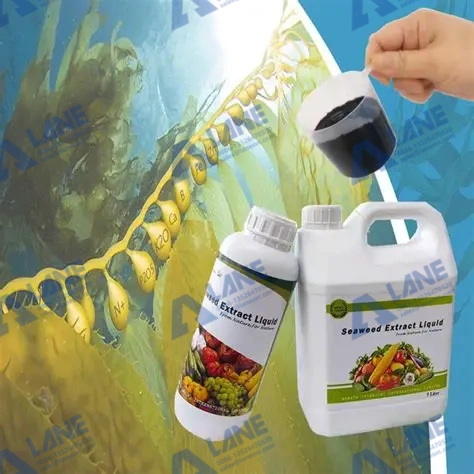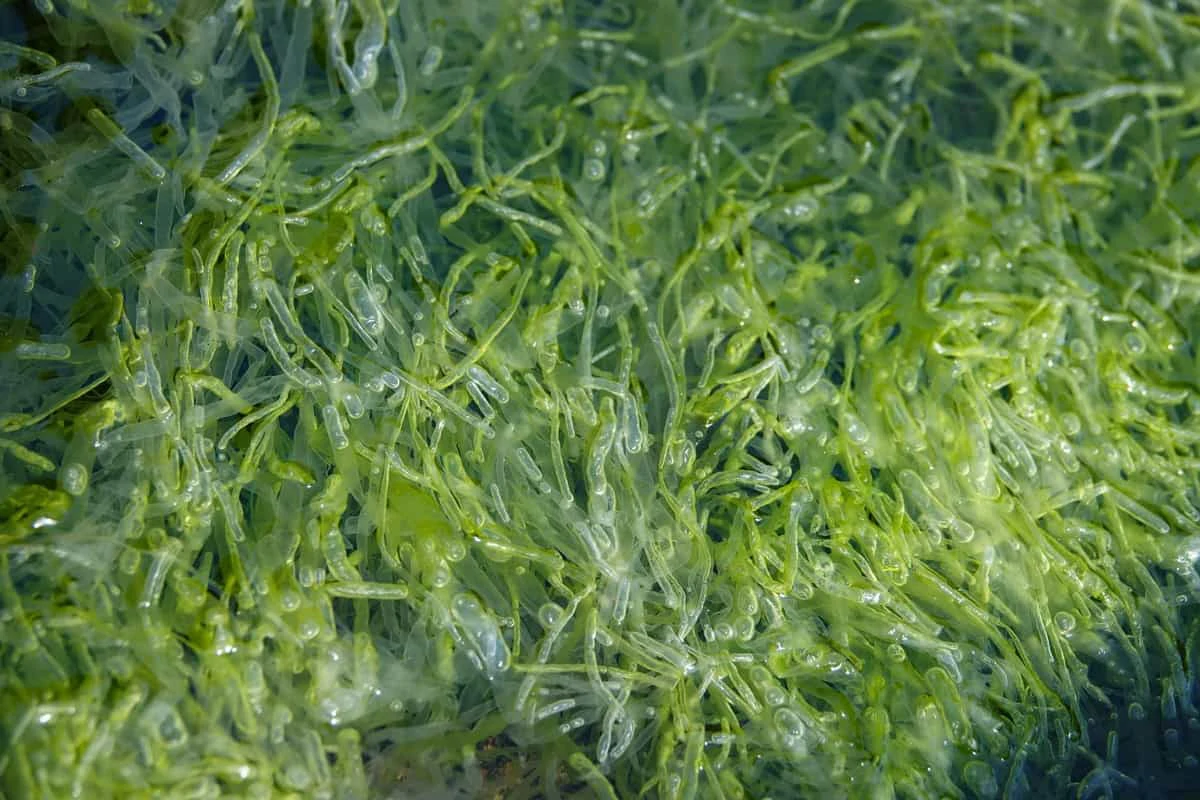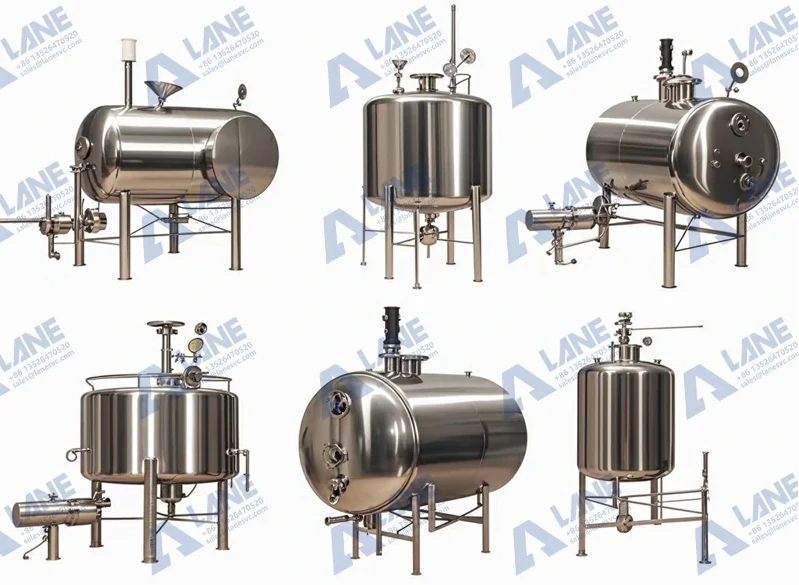
How Can Seaweed Extract Liquid Fertilizer Improve Your Crop Yields?
The global shift towards sustainable and organic agriculture has driven the demand for natural fertilizers – among which solutions based on seaweed stand out particularly. The well-designed seaweed extract liquid fertilizer making line can fully unleash the nutritional and biological stimulating potential of marine algae, converting raw seaweed into concentrated liquid gold required by crops.
Whether you are a startup seeking to enter the organic fertilizer market or a large agricultural enterprise expanding in the field of sustainable inputs, it is crucial to understand how seaweed is processed into liquid fertilizer. Let’s delve into the working principle of this process, the required equipment, and why LANE’s engineering technology can help global producers succeed.

Seaweed, especially brown algae like kelp (Ascophyllum nodosum), is packed with:
Natural growth hormones (auxins, cytokinins, gibberellins)
Micronutrients (iron, zinc, boron, copper)
Polysaccharides and amino acids
Bioactive compounds that enhance plant resistance and rooting
With this nutrient-rich profile, seaweed-based liquid fertilizer promotes stress tolerance, boosts fruit quality, and enhances root growth — all while reducing the environmental footprint.

The seaweed extract liquid fertilizer production line is a complete processing system, designed to extract, filter, concentrate and bottle bioactive liquid fertilizers from seaweed. It combines mechanical, enzymatic, and sometimes thermal treatment or chemical technologies to separate valuable compounds and convert them into shelf-stable and ready-to-market products.
The process varies depending on the species of seaweed—such as Ascophyllum nodosum, Sargassum, or Laminaria—and the intended composition of the final fertilizer. However, the following workflow outlines the standard operation of a commercial seaweed extract liquid fertilizer making line, designed for consistency, efficiency, and nutrient preservation.
1.Raw Seaweed Collection & Preprocessing
Washer and Crusher: Fresh or dried seaweed is washed to remove sand/salt and then crushed to increase surface area for extraction.
Feeding Hopper: Uniform feeding ensures consistent flow into the extraction system.
2.Extraction of Active Compounds
LANE provides two primary extraction systems:
Enzymatic Hydrolysis Tanks: Enzymes are added to break down seaweed cell walls at low temperatures, preserving bioactivity.
Thermal Extraction Reactors: For faster throughput, some use heat-assisted reactors to extract polysaccharides and minerals.
Optional Add-on: Alkali extraction (NaOH treatment) for enhanced solubility.
3.Filtration & Impurity Removal
Multistage filtration removes undissolved particles using mesh filters, sedimentation tanks, and centrifugal separators to ensure smooth, clog-free product.
4.Nutrient Enrichment & Formulation
To meet market demand, seaweed extract may be blended with:
| Additive | Function |
| Humic acid | Soil conditioner |
| Amino acids | Enhances nitrogen uptake |
| Trace elements | Customized for specific crops |
| Fulvic acid | Increases nutrient chelation and uptake |
LANE offers inline dosing systems for precision mixing.
5.Emulsification & Homogenization
A high-shear mixer ensures stability, especially for products that will be sprayed or bottled.
6.Storage and Packaging
The finished product is filled into bottles, drums, or IBC tanks using automated liquid filling machines. Labels and batch tracking are integrated for compliance and marketing. A well-designed seaweed extract liquid fertilizer making line supports flexible packaging solutions, enabling both bulk and retail-ready output.

Chile’s extensive Pacific coastline provides an abundant source of kelp and seaweed, especially Macrocystis pyrifera. In 2024, a cooperative in the Valparaíso region partnered with LANE to establish a modern seaweed extract liquid fertilizer making line, aiming to create more value from their coastal resources.
For years, the cooperative relied on exporting raw seaweed with low profit margins. They saw an opportunity to shift toward producing liquid biofertilizer, but lacked the right technology and processing knowledge. LANE supplied a turnkey production line, including: washing and chopping units, enzymatic extraction reactor, filtration and homogenization systems, pH adjustment and sterilization and automatic packaging equipment.This 5,000-liter/day system was installed and fully operational within 3 months.
The Results:
Boosted productivity by 120%
Exported finished products to Argentina and Peru
Local farms using the fertilizer saw better root growth and leaf color
Waste materials reused in composting, minimizing environmental impact
Why It Worked:
LANE’s experience in marine-based liquid fertilizer production ensured that the line was not only functional but customized to the local algae species, climate conditions, and operational goals. Their after-sales support — including training, remote monitoring, and spare parts logistics — made a complex installation smooth and sustainable.
Q1: Is seaweed extract fertilizer certified for organic farming?
Yes, most seaweed-based fertilizers are accepted by organic certification bodies like OMRI, ECOCERT, or local equivalents, depending on the additives used.
Q2: Can I use different seaweed species?
Absolutely. The extraction line can be calibrated for brown (kelp), red, or green algae — though each has a different nutrient profile.
Q3: How long does the entire process take?
For enzymatic extraction, typical cycle time is 6–8 hours. A complete production cycle including packaging may take 12–16 hours depending on batch size.
In today’s input-sensitive and sustainability-driven agricultural landscape, the seaweed extract liquid fertilizer making line represents both innovation and opportunity. It’s more than a production process — it’s a value chain solution that begins at the shoreline and ends in healthier crops and higher yields.
By investing in the right technology and partnering with experienced providers like LANE, you can harness marine biomass in a way that’s scalable, eco-conscious, and profitable.
For more details, please feel free to contact us.
Henan Lane Heavy Industry Machinery Technology Co., Ltd.
Email: sales@lanesvc.com
Contact number: +86 13526470520
Whatsapp: +86 13526470520
Leave a Comment
Latest Posts
LANE has more than 500 successful cases and is committed to providing customers with first-class solutions, high-end machinery and equipment, and one-stop pre-sales, sales and after-sales comprehensive customer service.